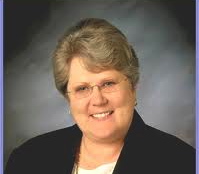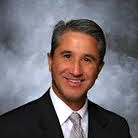Even with a 2.2 percent school budget increase on the horizon, George Boland is bracing for millions in cuts at Idaho Falls School District 91.
Boland, the district’s superintendent, said his district is set to receive $8 million less next year than it did in 2008-09, before the Great Recession took hold.

“The 2.2 percent is pretty meaningless because much of that is tied into line-item appropriations,” Boland said Thursday. “That doesn’t really help our bottom line very much. It doesn’t hurt it either, but there is not a lot of relief there.”
On Monday, the Joint Finance-Appropriations Committee passed the 2013-14 budget with $1.308 billion in general fund spending. Total spending, including dedicated and federal funds, comes to almost $1.6 billion. But the general fund still lags 2008-09 spending by more than $110 million.
“That pubic school budget is still very, very tight — still significantly below the level where it was at just few years ago,” State Department of Education Deputy Chief of Staff Jason Hancock told House Education Committee members Tuesday.
Idaho public schools budgets
2009 budget year: $1,418,542,700 in state general funds;
$1,695,948,400 total funding
Current budget year: $1,279,818,600 in state general funds;
$1,566,813,100 total funding
2013-2014 JFAC proposal: $1,308,365,400 in state general funds;
$1,598,156,500 total funding
“(The) base salary is still down, I want to say 9 percent,” Hancock continued. “Discretionary funds are down 20 percent from where they were… We wiped out funding for teacher supplies (through cuts)… We wiped out funding for textbooks. We hit the classroom pretty hard.”
After four years of tight budgets, Boland was hoping for bigger increases in teacher base salaries and discretionary spending.
The state budget would increase discretionary spending by 1.5 percent to $20,000 for a classroom support unit.
“Health insurance costs have outpaced that for several years,” Boland said. “If health insurance goes up 5 percent and discretionary goes up 1.5 percent, that gap gets bigger and bigger. Utility costs have also increased. Fuel costs are increasing and these are all things funded through discretionary money.”
District 91 is bracing for $3.5 million in cuts next year.
“We’re basically looking at going over our own fiscal cliff at this point,” Boland said. “The bottom line for us is we knew going to into the next fiscal year we were going to have to make significant reductions. This (budget) softens that somewhat. Instead of looking at, perhaps, $4 million in reductions we are now looking at $3.5 million.”
Progress toward restoration
Not every administrator is as concerned as Boland. Meridian Joint School District Superintendent Linda Clark thanked lawmakers for the increase, which she said is well-timed.
“In the big scheme of things, this is a very encouraging budget,” Clark said. “School districts have had a tough last four years. We have had serious cuts and we’ve had to do lots of things to balance our budgets. I’m very encouraged; this puts money back in and it prioritizes it properly.”

Clark says the budget increase, coupled with restoring “freezes” to the salary grid and other bills moving through the Legislature, should allow the district flexibility. To make ends meet during the Great Recession, Meridian cut staff levels to 127 teaching positions below its state allotment. Class sizes increased and the district cut professional development days from the calendar.
Salary grid tweaks should allow the district to buy back about 30 of those 127 teachers, Clark said.
“Every one of us who cares about public education should be encouraged,” Clark said. “I really, honestly believe the Legislature is taking all of the resources they can find and putting them into public schools to make progress in the area of cuts.”

In eastern Idaho, Bonneville Joint School District 93 Superintendent Charles Shackett supports several elements of the budget, but is concerned with salaries. Shackett backs the plan to allocate $21 million in competitive block grants for districts and charter schools. Districts would be allowed to spend 40 percent of that $21 million on professional development and 60 percent for merit pay – with the formula set at the district level based on student growth.
“Differentiated pay, pay-for-performance is something our district strongly supports,” Shackett said. “We have created a pay-for-performance plan our teachers were the author of. It hits achievement. It hits attendance, and it works.”
A closer look at teacher salaries
The 2.2 percent budget increase doesn’t mean teachers should expect a 2.2 percent raise. The budget earmarks $11.3 million to reinstates two years of movement on the salary grid.
The budget also restores 1.67 percent in base salaries, which were originally cut to pay for the Students Come First initiatives voters repealed in November.
But unlike last year, there is no new money for raises.
Furthermore, teacher salaries are tricky to calculate based on the complexities of the state budget and salary grids. Every year, school districts and teachers’ representatives negotiate contracts anew – so specifics vary locally.
Some teachers could expect a 1.67 percent increase in salary-based apportionment and a combined 7.5 percent increase reflected in unfreezing two years’ experience on the salary grid.
“Every school district and charter school is going to be different,” said Education Department spokeswoman Melissa McGrath.
Furthermore, unfreezing experience on the salary grid won’t benefit all teachers. The state salary grid maxes out at 13 years of experience. Teachers who reached that length of service prior to the budget cuts won’t see any benefit.
“It’s so misleading,” Shackett said. “Because there are so many (teachers) at the upper quadrant (of the salary grid) and the lower quadrant, half the teachers would not be affected.”
It is much easier to understand what teachers earning the minimum should expect. If JFAC’s budget passes, minimum salaries will increase from $30,500 to $31,000 next year – an increase of about 1.6 percent.
Shackett said he was extremely disappointed lawmakers could not do more.
“My first reaction as I look at it is embarrassment that a starting teacher is making $31,000,” Shackett said. “I almost feel ashamed that’s what my profession does.”
By comparison, Shackett said his 26-year-old daughter started out making about $80,000 a year in dentistry. And District 93 Chief Financial/Operations Officer April Burton said her daughter in California started banking $44,000 a year as an aesthetician, sculpting eyebrows at salons after two years in vocational school.
By comparison, the aesthetician’s brother – a starting teacher with two degrees – pulls down about $31,000 in Idaho, Burton said.
Burton and Shackett said it’s hard to get over $31,000 in actual pay until a teacher has worked four or five years or has gone back to school. But Burton said it’s important to recognize $31,000 is still a raise.
“Even though we’re talking about only a $31,000 starting salary, we are grateful it is an increase and not decrease,” Burton said. “That’s going in the right direction.”
